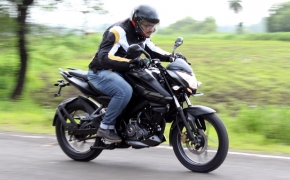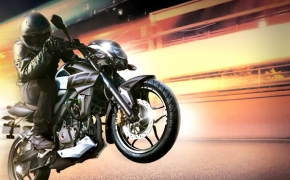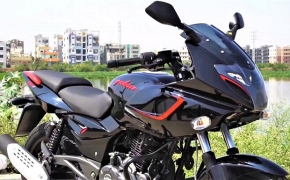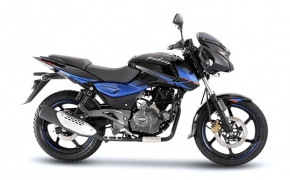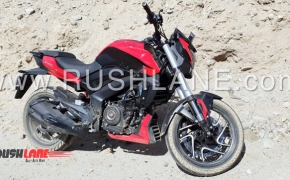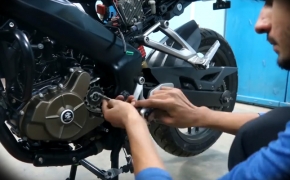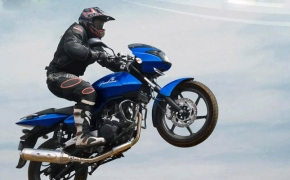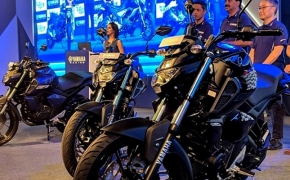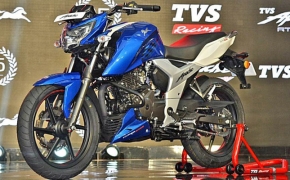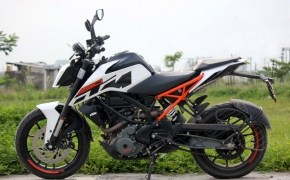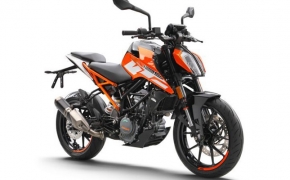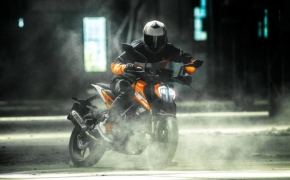With the launch of the new Bajaj Pulsar NS160, the Pulsar 200 Naked Sport has got a new younger sibling. Though both the bikes bear the same name and branding, there are many differences to speak about. So here's an exclusive article where we discuss about the similarities and dissimilarities of the Pulsar NS200 and NS160.
Design And Looks: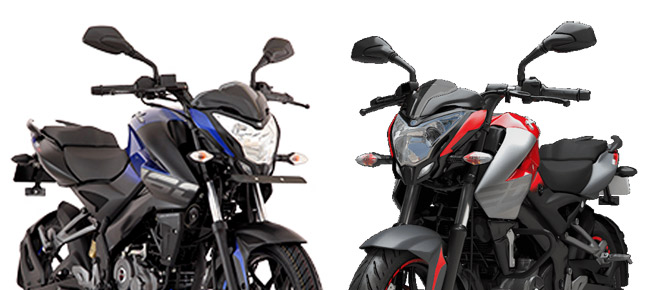 On the design front, both the Pulsar NS200 and NS160 look very similar to each other as there aren't much of any visible differences. But on a keen look we can differentiate the two motorcycles, as the 160 is on a paleo diet while the 200 is on a cheat day. The front forks, wheels, tyres, brakes and chassis are all a bit different for both. Another visual dissimilarity is the presence of a kick starter and rear drum brakes on the younger NS160. Apart from these both the motorcycles look macho, with the Wolf face headlight assembly and sharp lines doing justice to the overall design.
On the design front, both the Pulsar NS200 and NS160 look very similar to each other as there aren't much of any visible differences. But on a keen look we can differentiate the two motorcycles, as the 160 is on a paleo diet while the 200 is on a cheat day. The front forks, wheels, tyres, brakes and chassis are all a bit different for both. Another visual dissimilarity is the presence of a kick starter and rear drum brakes on the younger NS160. Apart from these both the motorcycles look macho, with the Wolf face headlight assembly and sharp lines doing justice to the overall design.
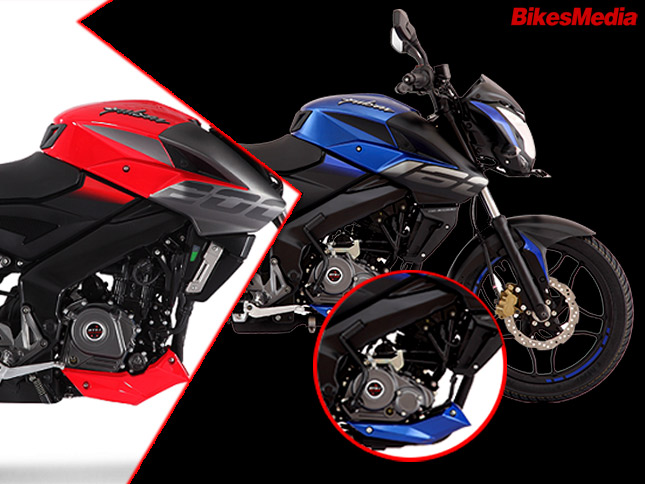 Engine And Performance:
Engine And Performance:
The Pulsar NS200 has a 199.5cc liquid cooled single cylinder engine which is derived from the KTM 200 engine, and churns out 23.5 PS at 9,500 rpm and 18.3 Nm of torque at 8,000 rpm. On the other hand, the Pulsar NS160 has a subtle 160.3cc oil cooled single cylinder mill which produces 15.5 PS at 8,500 rpm and 14.6 Nm of torque at 6,500 rpm. Both the bikes have class leading performance figures and are a great value for money, for the prices they are offered. The Pulsar NS200 has a six speed gearbox while the junior comes fitted with a five speed unit. Both motorcycles have electric starters while the NS160 has an additional kicker.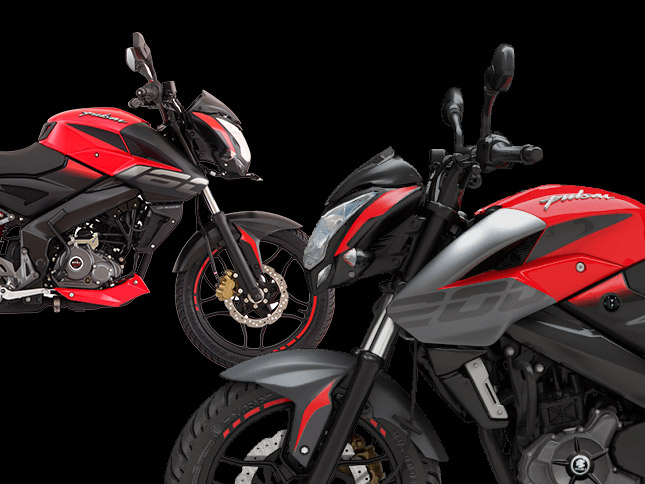 Brakes, Chassis And Suspensions:
Brakes, Chassis And Suspensions:
Both the bikes come with entirely different brakes and suspension, and the chassis is also made differently to suit them. The Pulsar NS200 gets a 280mm disc brake up front and a 230mm disc at the rear. The smaller naked Pulsar has a 240mm disc at the front and a conventional 130mm drum setup at the rear. Suspension duties are carried out by 37mm telescopic forks up front on the NS200, while the NS160 has a bit thinner telescopic forks and T stem. Both bikes come shod with Nitrox filled mono shock absorber with piggy back gas canister. Both bikes have steel perimeter frames, which provides high stiffness and low flex for better handling. The Pulsar NS200 comes with 100/80 - 17 52P and 130/70 - 17 62P dimension tyres, while the NS160 has leaner profile tyres at 80/100 - 17 46P and 110/80 - 17 57P respectively.
By: Aravind Rb
Design And Looks:
 On the design front, both the Pulsar NS200 and NS160 look very similar to each other as there aren't much of any visible differences. But on a keen look we can differentiate the two motorcycles, as the 160 is on a paleo diet while the 200 is on a cheat day. The front forks, wheels, tyres, brakes and chassis are all a bit different for both. Another visual dissimilarity is the presence of a kick starter and rear drum brakes on the younger NS160. Apart from these both the motorcycles look macho, with the Wolf face headlight assembly and sharp lines doing justice to the overall design.
On the design front, both the Pulsar NS200 and NS160 look very similar to each other as there aren't much of any visible differences. But on a keen look we can differentiate the two motorcycles, as the 160 is on a paleo diet while the 200 is on a cheat day. The front forks, wheels, tyres, brakes and chassis are all a bit different for both. Another visual dissimilarity is the presence of a kick starter and rear drum brakes on the younger NS160. Apart from these both the motorcycles look macho, with the Wolf face headlight assembly and sharp lines doing justice to the overall design.
 Engine And Performance:
Engine And Performance: The Pulsar NS200 has a 199.5cc liquid cooled single cylinder engine which is derived from the KTM 200 engine, and churns out 23.5 PS at 9,500 rpm and 18.3 Nm of torque at 8,000 rpm. On the other hand, the Pulsar NS160 has a subtle 160.3cc oil cooled single cylinder mill which produces 15.5 PS at 8,500 rpm and 14.6 Nm of torque at 6,500 rpm. Both the bikes have class leading performance figures and are a great value for money, for the prices they are offered. The Pulsar NS200 has a six speed gearbox while the junior comes fitted with a five speed unit. Both motorcycles have electric starters while the NS160 has an additional kicker.
 Brakes, Chassis And Suspensions:
Brakes, Chassis And Suspensions: Both the bikes come with entirely different brakes and suspension, and the chassis is also made differently to suit them. The Pulsar NS200 gets a 280mm disc brake up front and a 230mm disc at the rear. The smaller naked Pulsar has a 240mm disc at the front and a conventional 130mm drum setup at the rear. Suspension duties are carried out by 37mm telescopic forks up front on the NS200, while the NS160 has a bit thinner telescopic forks and T stem. Both bikes come shod with Nitrox filled mono shock absorber with piggy back gas canister. Both bikes have steel perimeter frames, which provides high stiffness and low flex for better handling. The Pulsar NS200 comes with 100/80 - 17 52P and 130/70 - 17 62P dimension tyres, while the NS160 has leaner profile tyres at 80/100 - 17 46P and 110/80 - 17 57P respectively.
By: Aravind Rb












